This Is How You Replace Treble Hooks With Single Hooks (Quick & Easy Way)
- By: Tony Acevedo
- on
- Found In: Conservation, Fishing Secrets, Fishing Tips
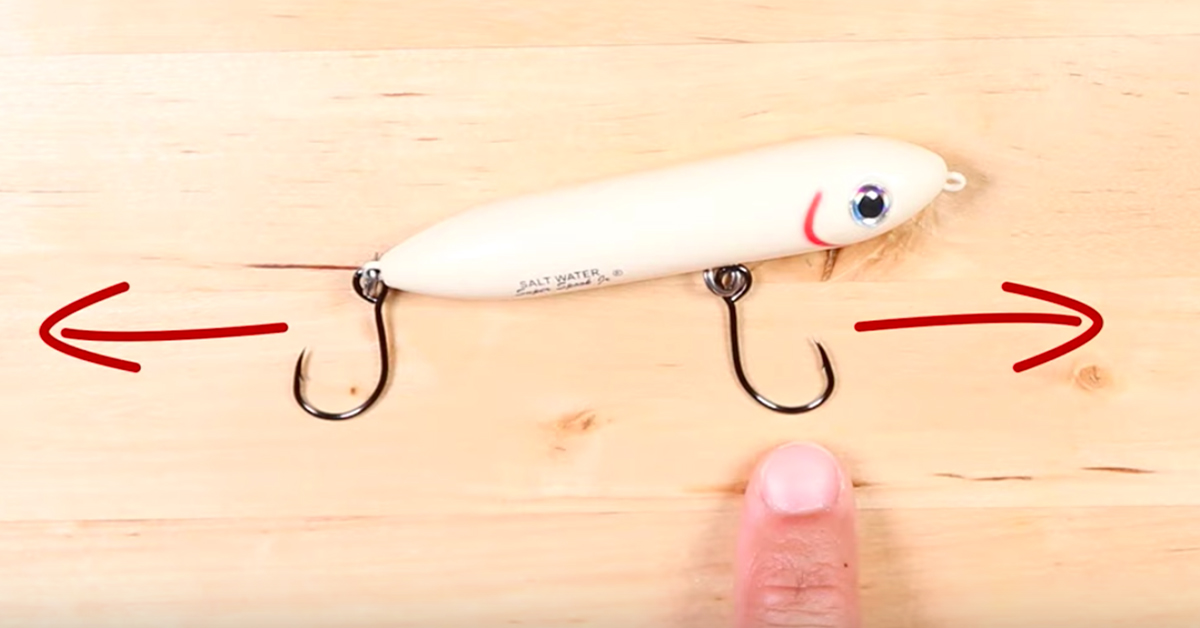
How would you like to save time, save a fish’s life, and potentially save yourself from getting hooked in the hand?
Sounds pretty awesome, right?
Well, there’s a simple way to do all of that…
Swap out your treble hooks with inline single hooks for all of your hard baits.
Here’s why you should switch them out:
- Single hooks are less likely to hook into you (ever caught a treble hook in the leg or hand?)
- Single hooks are better for the fish than treble hooks (fewer holes in their mouths and less accidental gill or eyeball hooking)
- Single hooks are less likely to get snagged on trees, grass, clothes, nets, etc.
- Single hooks save you time dehooking fish
And if you’re wondering about your hookup rate…
Yes, it might decrease slightly, but the time you’ll save by not getting snagged, quickly dehooking fish, and not hooking yourself, you’ll be able to cast more, likely resulting in you catching the same amount of fish.
Also, in the video below, I’ll show you a simple tip that will help you keep your hookup rate high.
Watch this video to see how to replace treble hooks with single hooks the quick and easy way.
How To Replace Treble Hooks With Single Hooks [VIDEO]
Related link:
Pre Step #1: Make sure the hooks are facing the right direction

The front hook needs to face forward, while the rear hook needs to face back.
This will make sure the hooks have the best opportunity to hook into the fish.
You can get inline single hooks from our shop by clicking here.
Pre Step #2: Have A Good Pair Of Split Ring Pliers
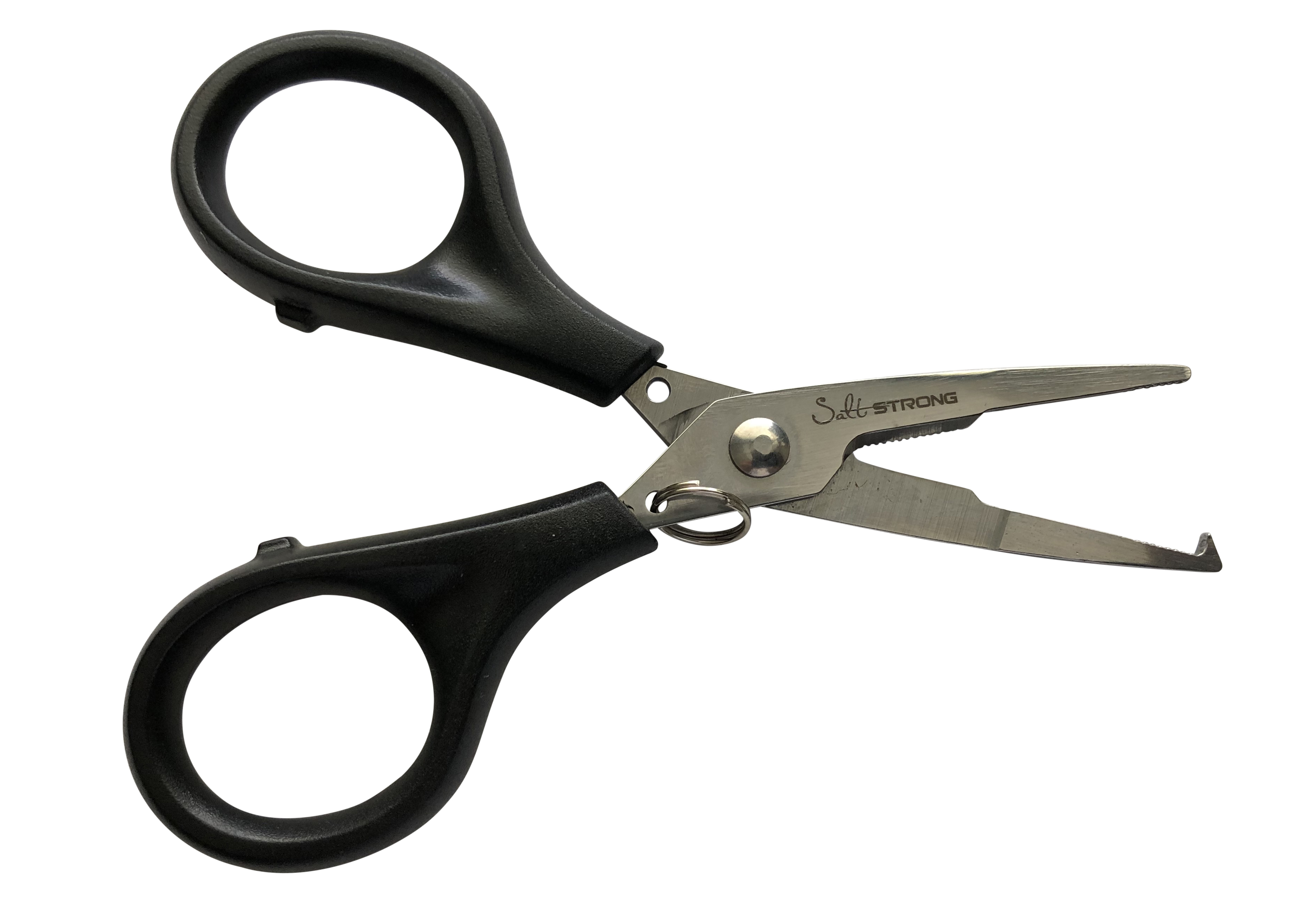
Without split ring pliers, this task will be very difficult.
You can get these braid cutting scissors that double as split ring pliers from our shop by clicking here.
Alright, now that everything is ready, here’s how you actually change out treble hooks for inline hooks…
Step #1: Make sure the eye of the hook is near where the split ring starts

Step #2: With the notched part of the pliers, split the ring to open it up
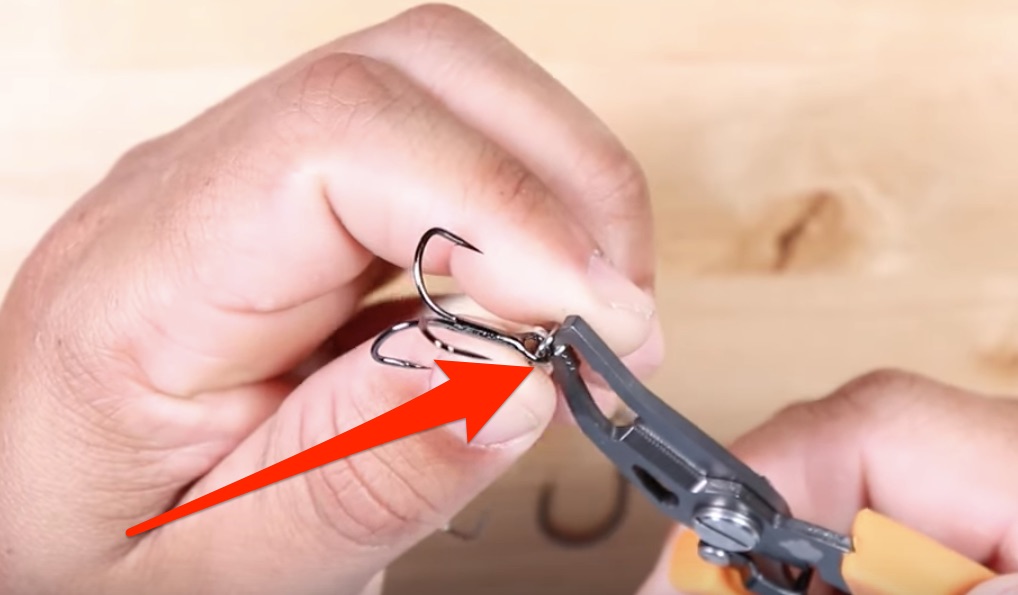
Step #3: Once the split ring is open, slide the eye of the hook in the opening, but make sure not to take the hook out yet!
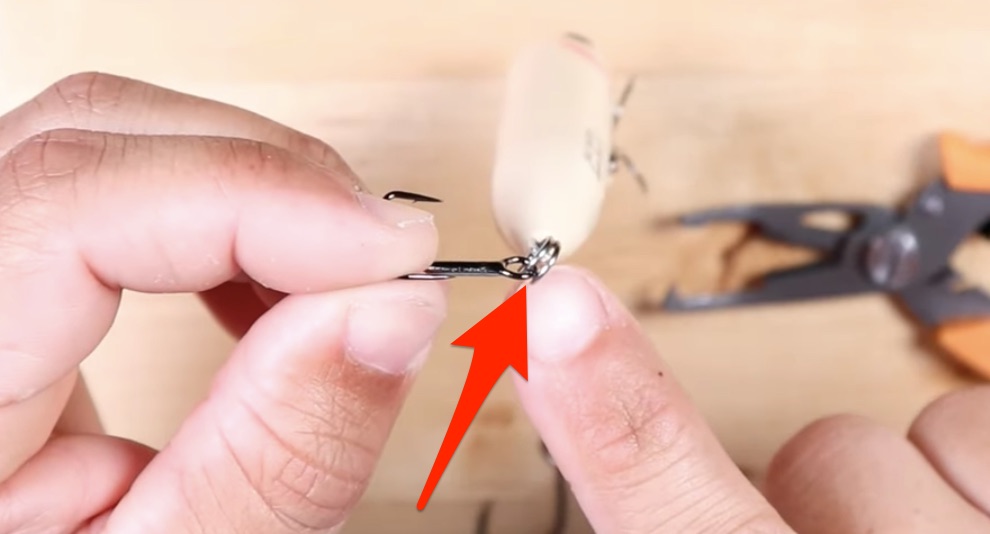
Step 4: While the original hook is holding the ring open, slide the new hook in the split ring (this will save you from having to open it again).

Step #5: Spin the ring, removing the old hook while simultaneously inserting the new hook
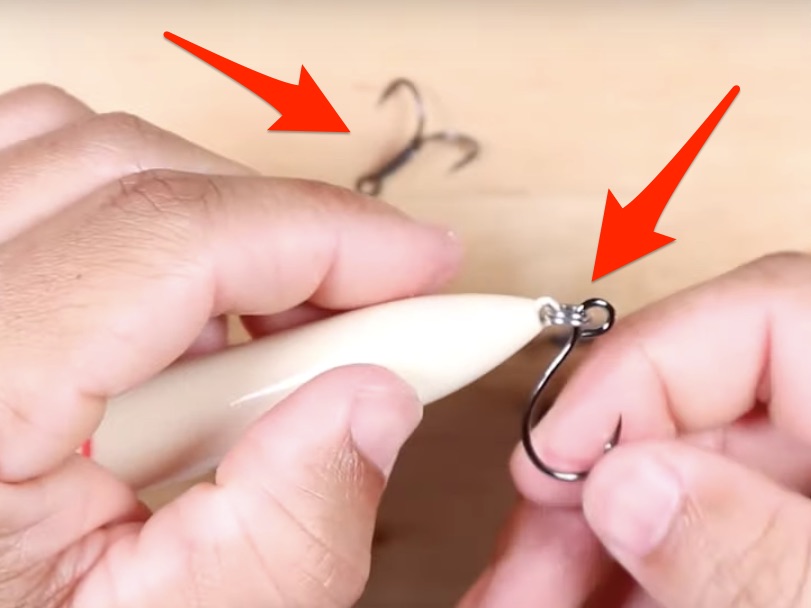
Step #6: Repeat for the other ring!
Conclusion
Have any questions about replacing treble hooks with single hooks?
Let me know in the comments below!
And remember, swapping these out can help save you time, save you from getting hooked, and save the fish.
Need inline single hooks or split ring pliers?
- Get inline single hooks from our shop here
- Get our braid cutting split ring scissors from our shop here
Know someone who needs to replace their treble hooks?
TAG or SHARE this with them!
Do You Want To Quickly Find New Fishing Spots In Your Area?
Then you’ve got to see this private fishing club!
Here’s what you’ll receive today:
- Weekly fishing reports and TRENDS revealing where the inshore fish are feeding all year long
- Weekly “spot dissection” videos that walk you through all the best spots in certain areas
- Exclusive fishing tips from the PROS you can’t find anywhere else
- Everything you need to start catching fish more consistently (regardless if you fish out of a boat, kayak, or land).
Click here to join today.
Related articles:
Related categories:
STOP WASTING TIME ON THE WATER!
Do what the “SMART ANGLERS” are doing and join the Insider Club.
Here’s what you’ll receive today when you join:
- Weekly fishing reports and TRENDS revealing exactly where you should fish every trip
- Weekly “spot dissection” videos that walk you through all the best spots in your area
- Exclusive fishing tips from the PROS you can’t find anywhere else
- Everything you need to start catching fish more consistently (regardless if you fish out of a boat, kayak, or land).

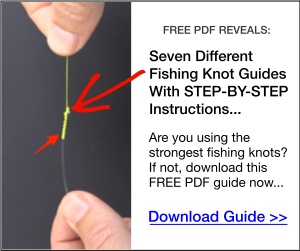








Can you use two split rings so as to use a stand hook?
I typically use only the back hook, removing the front, so not a problem it two rings are a bit longer, no front hook to tangle to.
You could, just have to consider the extra weight added by adding an additional split ring. I would reduce the size of the split rings if adding an extra one.
Thank You Tony for the helpful video. It is helpful to know especially with topwater lures which way the type of fish one is fishing for attack. Striped Bass will attack >90% of the time from the front. In order to get a reasonable hookup ratio I leave the front a treble for Striped Bass.
You’re welcome Ronald! Great info thank you for sharing!
Tony: I spent some time this weekend replacing many of my inshore lures’ trebles with single inline hooks. I learned a couple of things along the way when I checked out the lures’ alignment in a 5-gallon bucket of water. I discovered that many of the lures did not sit or sink horizontal anymore which is important. Some floating lures sat a bit uneven in water; Some suspending lures sank faster – also uneven – typically with a heavy “butt”; Sinking lures sank faster or also sank uneven with a heavy butt, too. So here’s what I discovered as I worked on this project —
1.) I experimented with different new hooks’ so the weight would not change the lure action and how it sits in the water. For suspending or sinking lures, I wanted the lure to sink horizontally. Most of my trebles that were replaced seemed lighter and the replacement singles were a bit heavier depending upon the hook strength (X-4X). So I tended to stick with lighter strength (and weight) hooks and not the 3X hooks I had, except for some floating lures that seem to handle the extra weight of a 3X.
2.) In some cases, the hook changes could not solve the alignment so I removed the forward hook and left the butt hook as the only hook. This way I achieved horizontal floating/suspending/sinking. I also find that most of my hookups are either on the butt hook or both (a swallowed lure).
3.) It was a challenge to match the treble hooks’ gap with the single replacement hook. In some cases when I did, I ended up with a huge hook on a small lure and the weight was also a problem. So I tried to get as close as I could with the gap size with a smaller hook. Also as you mentioned Tony, Owner vs. VMC replacement hooks do not match sizes. They are nearly a size different. I had both brands, so I was able to find a better match for gap or weight with my selection.
4.) Another surprise was how the split rings that came with my lures became stretched after several removal and new hook actions. Replacement of them is advised when you see the ring not return to a tight fit and a gap appears in them.
I encourage everyone to consider this as you replace hooks. I was surprised at the change to the lure in the water. I will see what I learn with these lures and their new inline single hooks – especially the lures that have only one hook in the rear. Tight lines!
Awesome info Glenn, thank you for sharing!
What size/type hook to replace trebles on corky fatboy? I have read it is important to maintain weight of lure for proper functioning. What do you recommend???
Hey Sandy!
If using suspending lures, such as the corky fatboy, it is important to keep the hook weight the same. Unfortunately I don’t know the exact weight on the original hooks that come on the lure, but the Owner replacement hooks give the weight on the packaging.
Just beautiful job
Thanks John!
Good job Tony. Question: Have you noticed which hook accounts for more fish ? Front or back?
Thanks Bruce! Haven’t really noticed which one gets hooked up the most. Both can hook a fish and then one might pop out.
Tony from what I can tell you haven’t lost too many fish. Thanks for responding
This is good information. Actually, I think it’s ok to go one step further and remove the front hook completely to make the bait more weedless and safer to use. We use lots of baits that only have one hook so it shouldn’t be much different.
Thank you for the great feedback David! That could definitely be an interesting test.